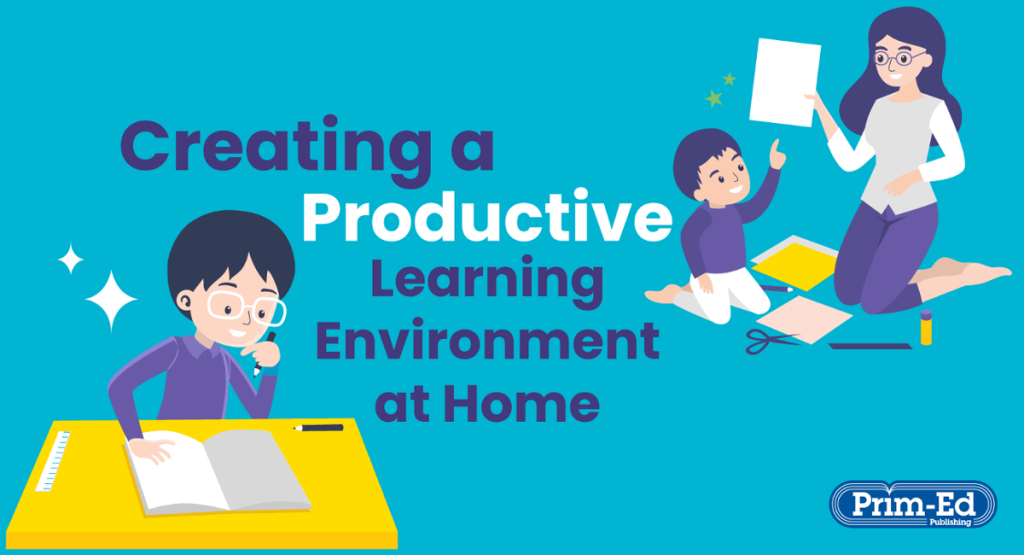Challenges and Solutions in Online Learning

Online learning has revolutionized education, providing flexibility and accessibility like never before. Whether it’s university courses, professional development programs, or skill-based certifications, online learning offers immense opportunities. However, it also comes with significant challenges that can impact students’ learning experiences. Issues such as lack of motivation, technical difficulties, social isolation, and assessment integrity hinder effective online education.
But with every challenge, there is a solution. By implementing structured strategies, leveraging technology, and improving student engagement, we can enhance the online learning experience. In this article, we’ll explore the most common challenges faced by online learners and practical solutions to overcome them.
Common Challenges in Online Learning
Lack of Motivation and Self-Discipline
One of the biggest struggles for online learners is staying motivated. Traditional classrooms provide structure, deadlines, and social interactions that naturally encourage participation. In contrast, online learning requires self-discipline, which many students find difficult.
Causes of Low Motivation
- Lack of a physical learning environment
- Absence of face-to-face teacher interaction
- Procrastination due to flexible deadlines
- Over-reliance on self-learning
Effects on Learning Progress
- Missed deadlines and incomplete assignments
- Loss of interest in courses
- Poor academic performance
- Increased dropout rates
Technical Issues and Accessibility
Not everyone has access to high-speed internet or the latest technology. Technical challenges can significantly hinder students’ ability to learn effectively.
Common Technical Problems
- Slow or unstable internet connections
- Outdated or incompatible software
- Limited access to laptops or mobile devices
Impact on Learning
- Disruptions in attending live classes
- Inability to submit assignments on time
- Reduced engagement in interactive learning activities
Limited Interaction and Social Isolation
Online learning often lacks the social aspects of traditional classrooms. Students miss out on group discussions, teamwork, and personal connections with classmates and instructors.
Consequences of Social Isolation
- Lack of peer support
- Difficulty in networking and collaborating
- Decreased enthusiasm for learning
Ineffective Time Management
Managing time effectively in an online environment can be challenging, especially when students juggle multiple responsibilities.
Common Time Management Struggles
- Poor planning and organization
- Distractions from social media and household tasks
- Procrastination leading to last-minute work
Difficulty in Understanding Course Material
Without face-to-face instruction, students often struggle to grasp complex concepts. Some learners benefit from real-time explanations, which online courses may not always provide.
Key Challenges
- Lack of immediate clarification from instructors
- Over-reliance on self-learning
- Difficulties with theoretical subjects like mathematics and science
Assessment and Academic Integrity Issues
One of the major concerns in online learning is ensuring academic honesty. With remote assessments, students have more opportunities to cheat, making it difficult for educators to evaluate their actual understanding of the subject.
Challenges in Assessment
- Open-book and internet-accessible exams make cheating easier
- Inability to monitor students during tests
- Difficulty in assessing problem-solving and critical-thinking skills
- Lack of standardized evaluation methods
Consequences of Academic Dishonesty
- Unfair grading and loss of credibility in certifications
- Students not truly mastering the subject
- Reduced trust in online education systems

Distractions and Home Environment Challenges
Studying from home presents a unique set of distractions that are not found in a traditional classroom. From noisy siblings to household chores, online learners often struggle to maintain focus.
Common Distractions
- Family interruptions and responsibilities
- No dedicated study space
- Social media and entertainment distractions
- Background noise from television, conversations, or pets
Impact on Learning
- Reduced concentration and retention of information
- Increased frustration and stress
- Lower academic performance
Mental Health and Well-being Concerns
The shift to online learning has also had an impact on students’ mental health. Without social interactions and a structured environment, many students experience stress, anxiety, and burnout.
Mental Health Challenges in Online Learning
- Feeling isolated due to lack of face-to-face interaction
- Increased stress from managing coursework independently
- Fatigue from excessive screen time
- Lack of access to emotional and psychological support
Long-Term Effects
- Decreased motivation and interest in learning
- Development of anxiety and depression
- Higher dropout rates in online courses
Diverse Learning Styles Not Being Addressed
Traditional classrooms allow teachers to adapt to different learning styles through various methods like lectures, hands-on activities, and group discussions. Online learning often follows a one-size-fits-all approach, making it difficult for some students to absorb information effectively.
Learning Style Disparities
- Visual learners may struggle with text-heavy materials
- Auditory learners may need more interactive discussions
- Kinesthetic learners lack practical, hands-on experiences
Implications for Students
- Lower engagement and retention of knowledge
- Increased frustration with learning materials
- Ineffective application of skills
Effective Solutions to Online Learning Challenges
Building Self-Motivation and Discipline
To overcome a lack of motivation, students must develop strong self-discipline strategies.
Ways to Stay Motivated
- Set clear academic goals and deadlines
- Establish a consistent study routine
- Break tasks into smaller, manageable sections
- Reward progress with small incentives
Enhancing Technical Support and Accessibility
Technical issues can be minimized by providing better access to resources and support systems.
Solutions to Improve Accessibility
- Institutions offering free or low-cost internet access
- Providing students with affordable laptops or tablets
- Using mobile-friendly learning platforms
- Creating offline access to course materials
Encouraging Peer Interaction and Community Building
Building a sense of community in online learning is essential to prevent social isolation.
Ways to Increase Interaction
- Virtual study groups and forums
- Interactive discussion boards and Q&A sessions
- Group projects and peer review assignments
- Online mentorship programs
Time Management Strategies for Online Learners
Proper time management can significantly enhance a student’s ability to complete coursework efficiently.
Techniques for Better Time Management
- Use digital planners and time-tracking apps
- Create a structured daily or weekly study plan
- Set specific study hours and stick to them
- Eliminate unnecessary distractions during study time
Improving Course Delivery and Teaching Methods
Online courses should be designed to cater to different learning styles and engage students effectively.
Strategies to Improve Online Teaching
- Incorporate multimedia learning (videos, animations, podcasts)
- Offer live Q&A sessions for real-time doubt clarification
- Provide interactive quizzes and gamified learning experiences
- Use adaptive learning technology to personalize education
Strengthening Assessment and Academic Integrity
Ensuring fairness and accuracy in assessments is crucial in online learning. Since students have access to unlimited resources during exams, institutions must develop new ways to maintain academic integrity.
Solutions to Maintain Academic Integrity
- AI-Based Proctoring: Online exams can be monitored using AI-powered proctoring tools that detect suspicious behavior, such as eye movement, additional screen usage, or multiple people in the room.
- Plagiarism Detection Software: Tools like Turnitin and Grammarly can help check for copied content in assignments.
- Project-Based Assessments: Instead of traditional tests, students can be graded based on long-term projects, case studies, or research papers.
- Oral Exams and Presentations: Conducting live oral assessments ensures that students understand the material rather than memorizing answers.
By implementing these methods, educators can create a more credible online learning environment.

Creating a Productive Learning Environment at Home
A structured and distraction-free study space is essential for successful online learning. Unlike physical classrooms, home environments vary, and not all students have a dedicated area for studying.
Tips for an Effective Study Environment
- Designate a Specific Study Area: Choose a quiet, comfortable space with minimal distractions.
- Maintain a Clean and Organized Workspace: A clutter-free desk helps improve focus.
- Use Noise-Canceling Headphones: These can block out background noise, allowing better concentration.
- Set Boundaries with Family Members: Inform them of your study schedule to minimize interruptions.
- Follow a Daily Routine: A structured timetable ensures a balance between study and relaxation.
Creating the right environment can significantly improve productivity and focus during online learning.
Supporting Mental Health and Well-being
Mental health challenges have increased due to the isolation and stress of online learning. Students must prioritize their well-being to maintain productivity and motivation.
Ways to Maintain Mental Health
- Take Regular Breaks: Short breaks between study sessions help refresh the mind.
- Exercise and Stay Active: Physical activity boosts focus and reduces stress.
- Stay Connected with Friends and Family: Virtual interactions can help combat feelings of isolation.
- Seek Professional Help: Many universities offer online counseling and mental health resources.
- Practice Mindfulness and Relaxation Techniques: Activities like meditation and deep breathing exercises can help reduce stress.
Institutions should also ensure that students have access to mental health resources and support groups to help them navigate their academic journey.
Adapting Learning Styles to Online Education
Online learning should cater to various learning styles to ensure effective knowledge retention. Many students struggle because the content does not match their preferred learning methods.
Ways to Adapt Online Learning to Different Learning Styles
- For Visual Learners: Use infographics, videos, and slideshows.
- For Auditory Learners: Include podcasts, recorded lectures, and discussions.
- For Kinesthetic Learners: Offer interactive simulations, virtual labs, and case studies.
- For Reading/Writing Learners: Provide extensive written materials and note-taking tools.
Educators should provide multiple content formats and allow students to choose how they consume course material.
Conclusion
Online learning is a powerful tool that makes education more accessible and flexible. However, it comes with challenges such as lack of motivation, technical difficulties, social isolation, and assessment integrity issues. These obstacles can hinder students’ progress if not addressed properly.
By implementing structured solutions—such as time management strategies, interactive teaching methods, peer engagement activities, and mental health support—students can thrive in an online learning environment. Institutions must continue to refine online education methods to create a more inclusive and effective system for learners worldwide.
With the right mindset and tools, online learning can be just as engaging and rewarding as traditional classroom education.
FAQs
1. How can students stay motivated in online learning?
To stay motivated, students should set clear goals, maintain a structured study routine, eliminate distractions, and reward themselves for completing tasks. Joining virtual study groups can also boost motivation.
2. What are some effective tools for time management in online education?
Popular time management tools include Trello, Google Calendar, Pomodoro timers, and digital planners. These help students organize their schedules, set deadlines, and track progress.
3. How can teachers ensure students are not cheating during online exams?
Educators can use AI-based proctoring software, plagiarism detection tools, and alternative assessment methods such as project-based evaluations and oral presentations to ensure academic integrity.
4. What are the best ways to reduce distractions while studying online?
Creating a dedicated study space, using noise-canceling headphones, setting a daily schedule, and using website blockers to avoid distractions like social media can help students stay focused.
5. How can online learning be made more interactive and engaging?
Instructors can use multimedia content, interactive quizzes, virtual breakout rooms, discussion forums, and hands-on assignments to make online learning more engaging.


